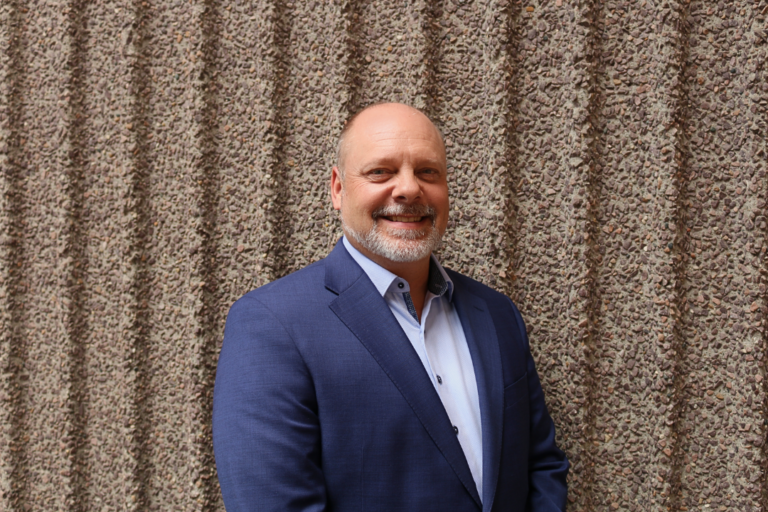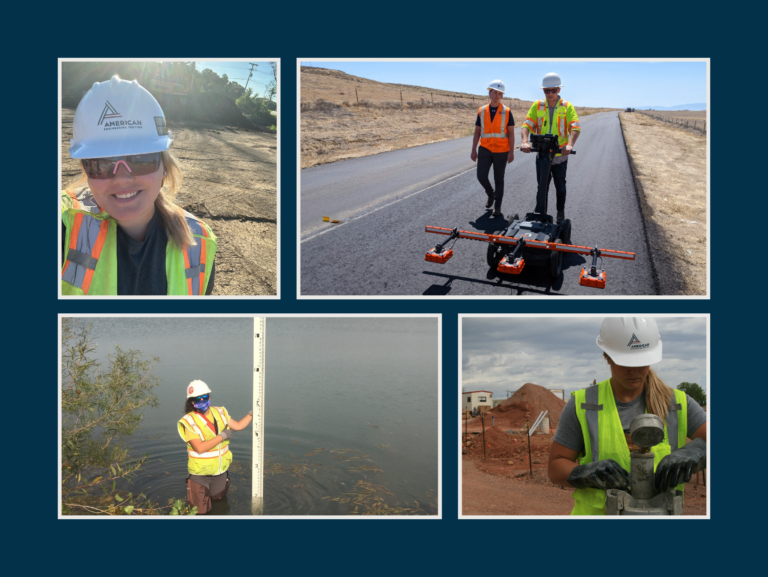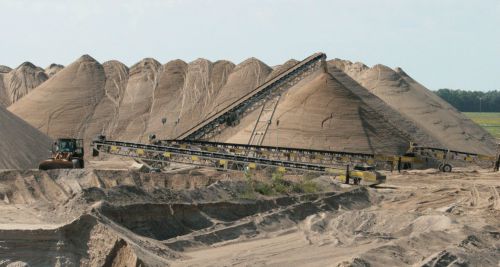
When glaciers etched through the Upper Midwest eons ago, deposits of sand and gravel were left behind to dot the landscape. During the Late Wisconsin glaciation event, the Superior Lobe advanced from the Lake Superior region into what is today the Twin Cities metro. Its retreat created a large deposit known as the Rosemount Outwash—regarded as the newest and best aggregate reserve in the 13-county metropolitan area.
The Rosemount Outwash sits roughly 20 miles south of Saint Paul in Dakota County, and is partially situated within the University of Minnesota’s Outreach, Research and Education (UMore) Park, a 5,000-acre tract of land on which the University plans to establish a self-sustaining community.
In a 2008 geological assessment commissioned by the University, the property is characterized as having high-quality sand and gravel deposits concentrated in three complexes that stretch across two-thirds of its acreage. So when Dakota Aggregates had the opportunity to mine the storied outwash, the proposed operation would not only allow for the optimal production of aggregates but also benefit end users of UMore Park.
The result: an innovative sand and gravel mining operation unlike any other.
In September 2014, AET had the opportunity to tour the site and Dakota Aggregates’ operation. AET had advised on the site’s infrastructure and is providing quality control to complement internal system controls, but we had yet to explore all of its unique features and facilities. Here’s what we found to be most impressive.
Minimizing Twin Cities construction
The operation, which began in 2013, takes place on an 1,800-acre site and features a state-of-the-art processing facility along with plans for three production plants— precast concrete, ready-mix concrete and asphalt. In considering the site’s vast aggregate reserves, the on-site facilities will eliminate a costly step in the aggregate production process: transportation. With on-site facilities, Dakota Aggregates will also be able to maximize the use of the aggregates from raw materials to commercial-ready products.
Over the next 40 years, the operation is expected to produce millions of tons of construction-grade aggregates that will move state and local projects ahead by keeping production costs in check.
Conserving/protecting natural resources
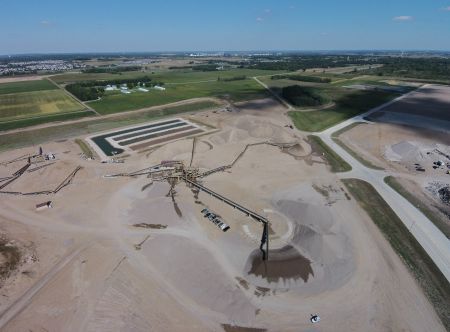
To minimize the consumption of water, the aggregate production plant includes a sedimentation pond system designed to recycle wash water from the processing facility. The wash water is directly discharged into the multi-pond system and is extracted once the clarification process is complete.
The ponds were sized with foresight to provide clean water for the second aggregate production plant, which will be required to supply sufficient aggregates for the three on-site production facilities. All of the berms separating the ponds have a road area for removing the silt- and clay-sized sediment for use in the reclamation process.
Mining high-quality aggregates
The Rosemount Outwash boasts a high concentration of high-quality, gravel-size particles, making it exceptionally ideal for concrete production. The aggregate’s excellent quality also means that it requires minimal processing and is more durable in Minnesota’s winter environment.
Employing innovative, efficient mining procedures
There’s no question that Dakota Aggregates’ equipment and automation far eclipses most mining operations in the state. From stockpiling equipment that minimizes segregation (i.e., changes to the material gradation as aggregate particles are deposited to form the stockpile) to a computerized system that allows one operator to control the entire processing facility, the operation is thoughtfully designed with efficiency in mind.
Community responsibility
The locally owned company remains conscientious about its responsibility to minimize disruption and blend into the surrounding community throughout the duration of its operations.
Aesthetic components have been incorporated into the long-range plans since day one. More than 750 trees—half of the expected number over the lifetime of the operation—have already been planted, and visitors take note of the decorative monuments at the entrance gates. Additionally, the property will be landscaped with more than seven miles of earthen screening berms during the life of the facility.
Planning for the future
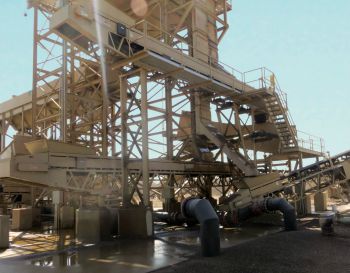
The entire facility has a mining and reclamation plan in place; mining areas have been prepared by removing a relatively consistent profile of topsoil and silty clay, all of which are stockpiled for future use or for reclamation purposes. Dakota Aggregates is mining the northern portion of the property first and will then proceed south. As mining is completed in each area, the land will be reclaimed in preparation for development of a mixed-use community. The reclamation will include a 400-acre, recreational lake as its focal point. While we at AET were certainly enthralled by the operation’s bells and whistles, it was Dakota Aggregate’s well-designed plan—and the benefits its high-quality aggregates will bring to local construction projects—that ultimately stole the show. All in all, we immensely enjoyed our look behind the scenes (we hope you have, too!), and we thank Dakota Aggregates for the opportunity to tour the operation.
For more information on the services AET provided for this project please visit:
- Petrography – contact Gerard Moulzolf
- Geotechnical – contact Greg Reuter
- Construction Services – contact Dave Wirth
- Environmental Engineering and Testing – contact Gail Cederberg
- Pavement Investigation, Engineering, and Design – contact David Rettner

